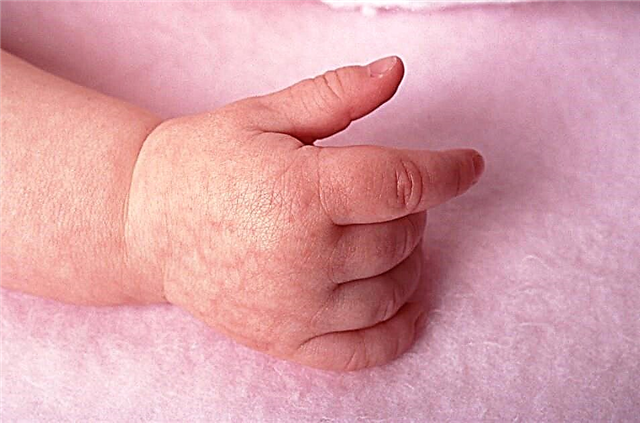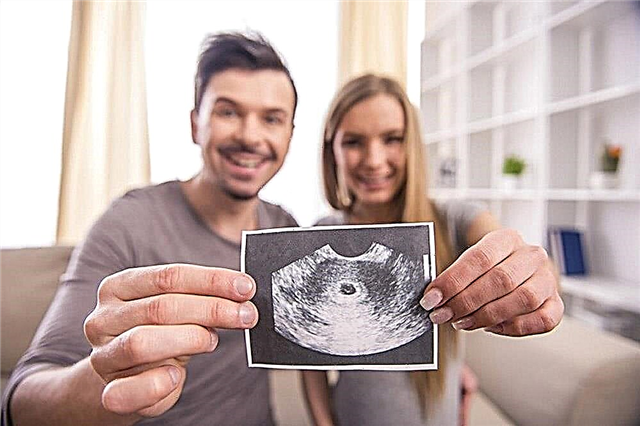
According to the statistics of the World Health Organization, about 6% of the world's population have hearing problems. The problem is especially acute in childhood, when, without the ability to hear, the child cannot build a complete picture of the world. Therefore, the issues of early detection and rehabilitation of hearing loss and deafness in children are among the most important in medicine.
It is very difficult for parents who have learned that their child is hearing impaired, but gradually they become convinced that much depends not even on how and how auditory perception is lost, but on how correctly the child is rehabilitated, because this is what is important for his further development, learning, life.

Why is good hearing needed?
People begin to think about the meaning of hearing mainly when they are deprived of it. Even for an adult, deprivation of the ability to perceive the world by sound becomes a real tragedy. As for the child, he needs hearing in order to know this world to the fullest. Even the limitation of the function in one ear leads to the fact that many things become inaccessible for the baby, he cannot fully hear the sounds of nature, the appeal of his parents to himself, it is difficult for him to distinguish the nuances of music. If a child is deaf or hard of hearing in both ears, his mastery of speech skills is questionable.
Speech is formed at first in a passive form - the child listens to the sounds that others reproduce, and only after that he tries to repeat them himself. If he does not hear sounds, then he simply has nothing to repeat. If speech is undeveloped or insufficiently developed, the child does not form the vocabulary necessary for communication and learning, his logical thinking suffers. And, naturally, the lack of good hearing cannot but affect the formation of the child's personality as a whole.
Much also depends on the time of the onset of the pathology. If a child has lost the ability to hear well already at the age to which he has accumulated a certain vocabulary, then without competent rehabilitation he may soon lose it.
If a baby was born deaf or hard of hearing, then without rehabilitation methods and devices he simply will not be able to master speech, he will not be able to communicate fully.

Classification
In matters of rehabilitation and prognosis, the cause of hearing impairment or loss is very important. If a child develops otitis media during flu or acute respiratory viral infections and, in connection with this, inflammation of one of the hearing organs begins, it does not belong to the number of children with hearing impairments, as the loss is likely temporary and hearing will recover after treatment.

Children with hearing impairments, by international definition, are these are children who have persistent (i.e. irreversible) hearing loss in both ears. At the same time, the perception of sound information may be difficult (in a child with hearing loss) or it is not possible at all (in a child with deafness).
Deafness is considered the most severe form of auditory dysfunction, especially if it is acquired at an early age or is a congenital disorder.
Hearing loss can vary in the degree of loss of hearing ability, and with minor forms, children are quite capable of studying in a regular school, since only whisper speech is poorly perceived, and with moderate or severe hearing loss without correction and rehabilitation, learning and communication will become an impossible task, since even with residual hearing, if a child was born with hearing loss or lost hearing at an early age, speech will not develop.
All children with auditory dysfunction are divided into three groups: deaf (completely deaf), hard of hearing and deaf late. If everything is more or less clear with the first two groups, then the third includes children who have lost the opportunity to hear normally at the age when their speech has already been formed.


Reasons for violations
The auditory function of the human body is very finely organized, it can be disturbed by any negative factor both before our birth, in the prenatal period, and after. In this regard, the reasons for hearing loss or primary hearing loss can be very different.
The most common factors are.
- Hereditary - Parents who have problems with auditory function often give birth to offspring with a similar problem, while a child can inherit deafness or hearing loss from birth not only from mom and dad, but also from grandparents. Geneticists have proven that deafness can be transmitted by both dominant and recessive traits.
- Congenital - formed during the intrauterine formation of the fetus, especially during periods when the structures of the hearing organs and the corresponding parts of the brain are laid. The reason for the baby's hearing loss can be a viral infection, which the mother has had, it is especially dangerous in the first trimester, the Rh conflict between the mother and the fetus, the pregnant woman taking antibiotics, smoking and taking alcoholic beverages while waiting for the child.
- Generic - anomalies of auditory function in this case develop as a result of birth trauma, such as, for example, head compression, the use of obstetric forceps, pathological childbirth, injuries of the cervical vertebrae, etc.
- Acquired infectious - develop in children born with normal hearing, as complications of diseases. Most often, deafness and hearing loss are the result of diseases such as meningitis, scarlet fever, measles, mumps (mumps). All strains of the influenza virus are very dangerous for infants. Hearing damage in an infectious disease mainly manifests itself in damage to the auditory nerve, the cochlea. Severe, especially purulent otitis media, suffered by a child, may well be complicated by the development of hearing loss, usually to a mild or moderate degree. Labyrinthitis often leads to severe hearing loss and deafness. The cause may be postponed mastoiditis, ear fistula, eustachitis.
- Other acquired - often hearing problems develop in children with adenoids. Hearing loss and deafness may develop due to traumatic brain injury, due to the intake of ototoxic antibiotics (gentamicin, monomycin, neomycin, streptomycin).
Hearing impairment is diagnosed by various methods. First of all, according to objective behavioral signs: children ask again, the baby does not hear what they say to him the first time. Many toddlers with sensorineural hearing loss pull the auricle to hear. Babies develop slowly, do not master humming, syllables, words, or master, but with a great delay. After a year, grown-up children begin to peer convulsively into the lips of the speaker to try to understand what they want from them.
The most accurate method for determining the problem and its degree is considered to be hardware examination - audiometry.
Its results show not only the type of hearing impairment (conductive or sensorineural), but also determine the range of audible and indistinguishable frequencies and ranges.

Group characteristics
The classification of groups of children with hearing impairments has its own characteristics, which must be taken into account not only by teachers and doctors during rehabilitation and training, but also by parents in matters of family education.
Deaf
Children who do not hear at all risk becoming deaf and dumb even with a normally developed articulation apparatus. Without rehabilitation and a special training program, they will not be able to master speaking skills.
In more than half of cases, children become deaf not in the womb, but after birth, at 1-2 years of age.
Children of this group have features in the development of vision, psyche, perception of reality. They have a great need for communication, like all other children, but only gestures that do not meet the needs of psychological development are available to them.
Deafness is often accompanied by pathologies of the heart and blood vessels, as well as vision. The ability to see normally is lost due to overstrain of the organs of vision, because in the absence of perception of sounds, the child automatically begins to strain his eyes more strongly. The secondary defect concerns the change in the timbre and sound of the voice.

Children who lose hearing at a later age
Even if a child has lost the ability to hear normally in preschool age, he retains a speech skill, but whether it will remain in the future depends on how well the child learned to speak before the onset of hearing loss or deafness, as well as on how he will be trained and correction. Children who have already learned to write and read retain their speech to the best degree.
A child who is used to hearing his own voice, but now deprived of such an opportunity, often begins to disfigure the pronunciation, speech defects appear, which were previously unusual for him. He forms sentences strangely, makes multiple mistakes in stress, pronunciation of individual sounds.
Such children perceive the loss of hearing function much more difficult. Almost all of them develop mental trauma, increased anxiety. Often children become withdrawn, negatively disposed towards others. Much also depends on the extent to which the child has lost his hearing. Children who perceive only the low frequency range cannot distinguish speech. Children who are able to perceive medium frequencies (up to 500 Hz) can generally perceive the sound of speech if it sounds right near the ear, and can also distinguish vowels.
The most favorable is the preservation of the ability to perceive sounds in the range from 500 to 1500 Hz. Such guys can perceive a person's voice from a distance of two meters, perceive all vowels and most of the consonants, short words and phrases.

Hearing impaired
Congenital hearing loss is usually not perceived by a child as an inconvenience until a certain age. They get used to hearing the world the way they can hear due to the degree of hearing loss. But in kindergarten, school, communication difficulties begin to arise, which form an inferiority complex in the child.
The same applies to babies who have become deaf for acquired reasons. A child can lose the ability to hear normally at any age, and in everyone, this pathology brings its own inconvenience. Educational prospects are directly related to the degree of hearing impairment.

Features of the educational process
Children with hearing impairments have special educational needs. For any violation, the most important thing is the development of oral speech and the associated processes of logic and thinking.
Even total deafness (which, by the way, is not so common in children) is not a sentence at all. They can be taught to speak and perceive the speech of other people.
Residual hearing, vision, skin sensitivity will help with this. For them, special educational programs have been developed, exercises that the child will start using sound-amplifying equipment.
They learn the art of lip reading quite easily, and for this, teachers use special articulation. In the absence of any residual hearing, the teacher develops tactile and vibrational sensations of the baby, which perfectly complement the ability to read lips. There are special types of devices that help convert a person's speech into vibration.
Deaf and hard of hearing children write a lot... Signal speech and facial expressions also have a place in learning. The peculiarities of the mental development of a particular child must be taken into account, attention is paid to the prevention of mental disordersthat can develop if the child begins to feel inferior.

In Russia there are special kindergartens and schools for deaf and hard of hearing children. Children are admitted to kindergartens from the age of 3, and to the nursery - from the age of 2. For schoolchildren, there are special classes of correctional schools, where education continues according to specially developed programs.
Parents should remember that the opportunities for the intellectual development of children with hearing impairments are unlimited. And with hearing impairments there is an opportunity to get an excellent education, become an excellent specialist, achieve high results in art, sports, sciences.
It is noticed that children who from childhood are accustomed to overcome something (in this case, the problem of hearing impairment) grow up to be very purposeful and successful people.
Children with mild hearing loss can be educated in regular schools according to a general, non-correctional program. But here, too, everything is quite individual - if the child is not comfortable, they laugh at him, the defect is noticeable to others, it is better to transfer him to a specialized class, where he will get the opportunity to develop and learn without looking back at others.
Often, even the very fact of wearing a hearing aid confuses healthy peers. No one reacts to a child with glasses as sympathetically and with such attention as to a child in a hearing aid. And there is only one principle: if a child is embarrassed to put on a hearing aid in front of his peers, he needs to be transferred to an environment where wearing a hearing aid is a common thing, which will surprise no one.


Hearing correction
Medical science does not stand still, and today no one is going to condemn a child who for some reason cannot hear fully, no one is going to doom to live in silence.
It is rather difficult to talk about hearing restoration. On the Internet, there are many indications of the author's methods of restoring even severe hearing loss, and hundreds of thousands of parents have already become victims of scammers, since none of them turned out to be effective.
We can talk about recovery only in case of temporary loss (after otitis media, for example). For this, blowing through the auditory tubes, physiotherapy, and some medicines that improve blood circulation in the inner ear are used. But if the course of treatment is unsuccessful, then the degree of hearing loss is examined. And then the parents receive recommendations for the rehabilitation of the child. The sooner it starts, the more favorable it will be.
Detection of sensorineural hearing loss in a baby is a direct indication for rehabilitation, since, unfortunately, there are no means for effective and efficient treatment of this disease.

Apparatus
Hearing aids for children are selected individually. The hearing aid procedure is performed if the hearing loss is about 40 dB in both ears or the same value in one ear and deafness in the other. Hearing correctors are worn for infants at any age, even in the first year of life, if pathology is detected early.
The most difficult thing is hearing aids for babies. If the signal amplification is too high, acoustic trauma may develop, if the signal is weak, it may not be enough for the development of speech and psyche.
Modern hearing aids are pocket (the most powerful), behind-the-ear and in-the-ear, which are practically invisible from the outside, especially for girls who have the ability to cover their ears with long hair. Modern devices can be configured using special computer programs in accordance with the audiometry data of a particular patient.
Every six months, a child with a hearing aid must come to an audiologist to do an audiogram, and if necessary, readjust the device.
The price of a hearing aid depends on its type and manufacturer; it can start from 15 thousand rubles and end with 200 thousand. With bilateral hearing loss, two devices are purchased - in the right and left ear.
Tympanoplasty
If the examination shows dysfunction of the middle ear, then during otoscopy, the clinical picture is determined and timplanoplasty can be indicated - an operation that consists in sanitation, elimination of inflammation, and then plastic of the tympanic membrane and other structures of the middle ear.
After tympanoplasty, the predictions for natural hearing restoration are quite high, but this is still not 100% even if all recommendations and hygiene requirements are followed.

Cochlear implantation
This operation is indicated for children with rather severe hearing impairments, when there is no effect from the hearing aid. An implant is a combination of two parts (one is always external, it is carried with them, the other is implanted into the inner ear). The external one consists of a microphone, a processor that converts sounds into electrical impulses, and a transmitter that transmits vibrations directly to the auditory nerve.
The inner part, which is implanted, contains a receiver and a signal decoder. There are also thin electrodes that surgeons insert into the cochlea with pinpoint precision.
Implantation solves the problem of the sound-conducting apparatus of the hearing organs, which hearing aids cannot overcome. The baby's brain picks up incoming electrical impulses and recognizes them as sounds.

The operation is indicated for deafness and severe sensorineural hearing loss in both ears, as well as for illegible speech perception in the presence of hearing aids. Rehabilitation after surgery is long and painstaking.
Implantation is not performed if the auditory nerve or auditory center of the brain is affected. In this case, it is not effective. They do not perform the operation due to inefficiency and if the child spent a lot of time in silence, not perceiving sounds. There is a high probability of atrophy of the branches of the auditory nerve.
The most effective are operations that are performed as early as possible after the onset of deafness or severe hearing loss. The earlier a child is diagnosed with deafness, the more effective cochlear implantation can be.
Do not think that the child will wake up from anesthesia and begin to hear everything. After the operation, he will have a long period of training in a special program that will eventually teach him to hear. Perhaps not all, and not as good as healthy children, but this is better than living life in complete silence.




